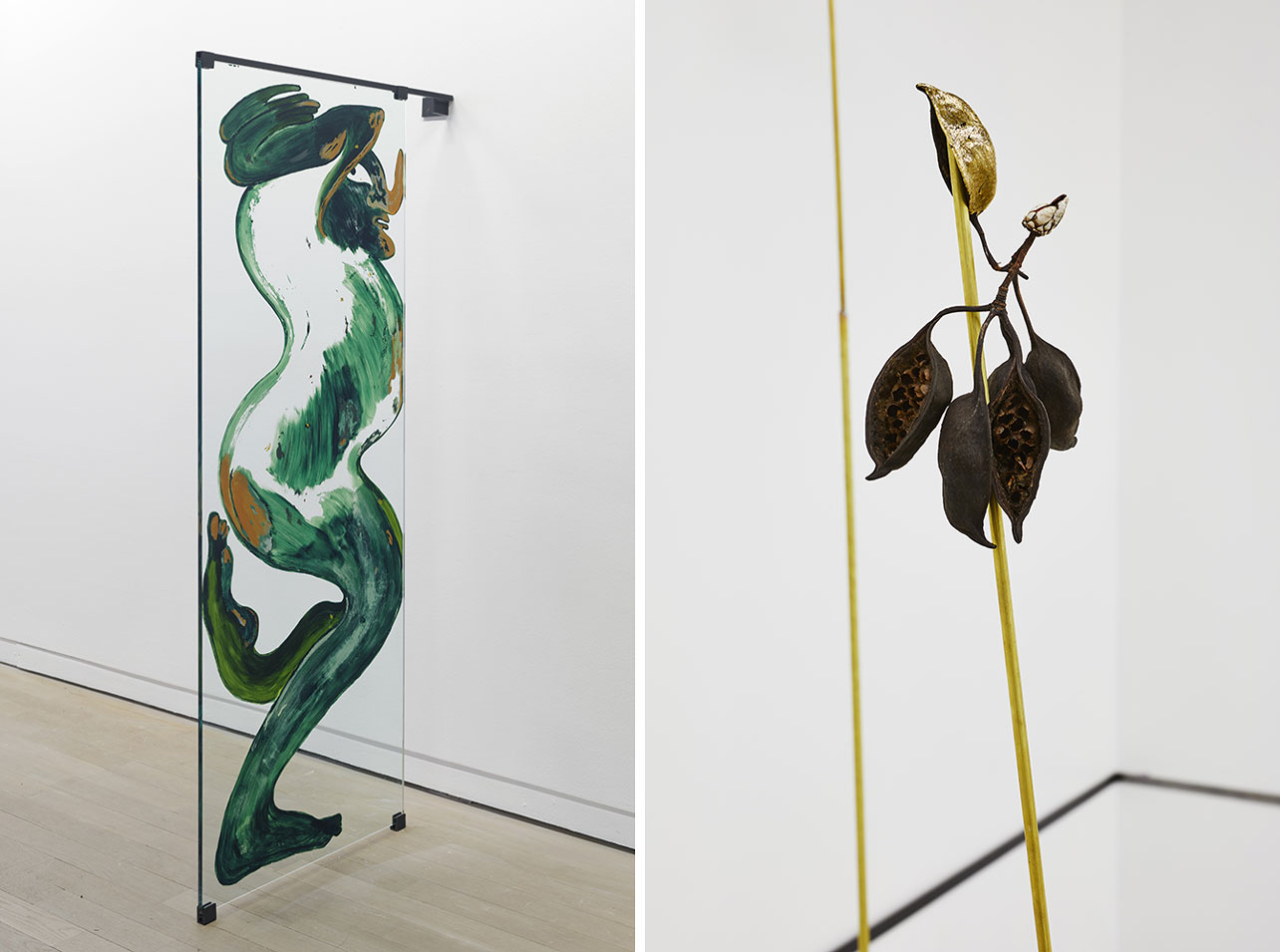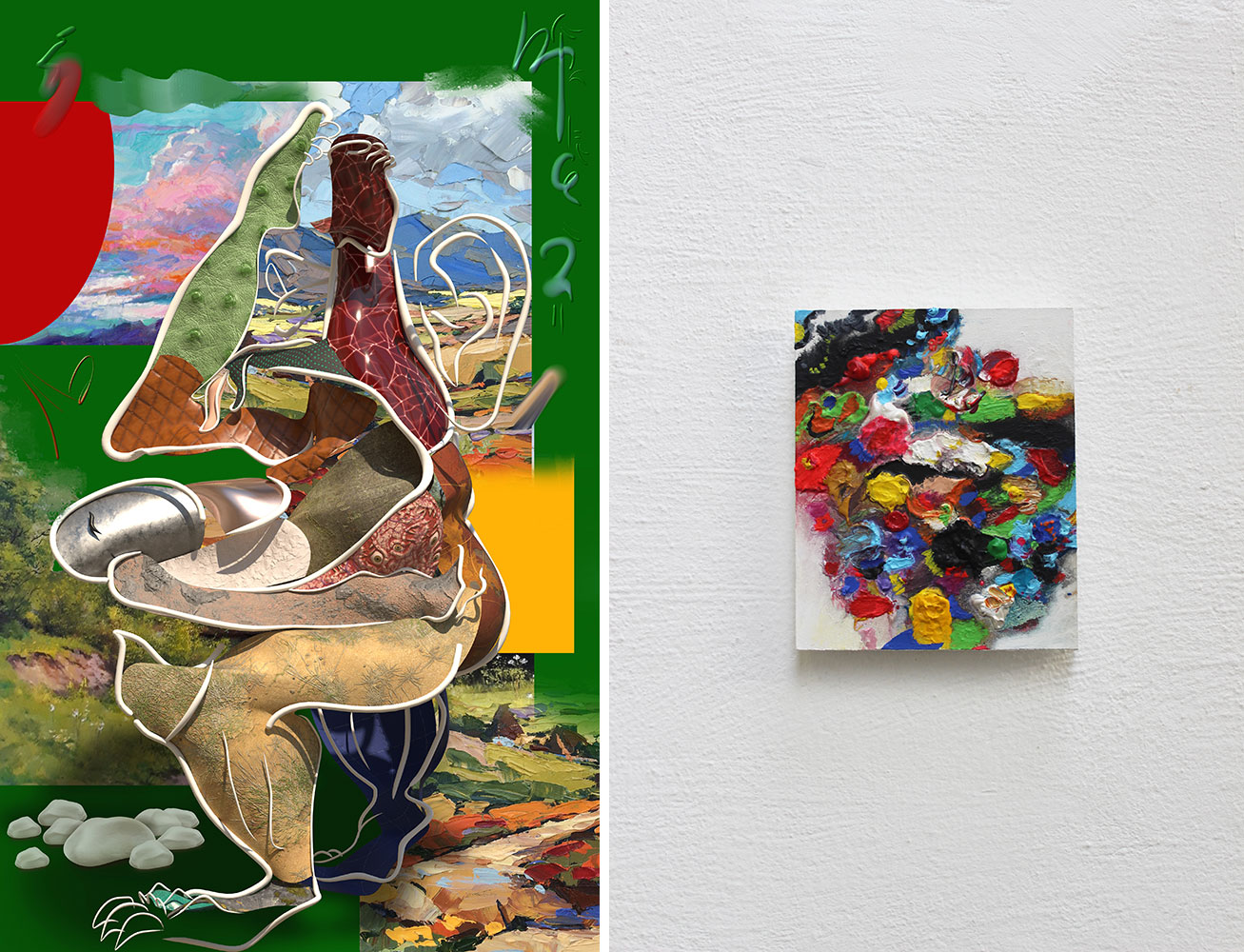ART-TRIBUTE:Future, Former, Fugitive
 The exhibition “Future, Former, Fugitive. A French scene” is based on an open conception of territorial placement – bringing together artists born in France and abroad, living in France or elsewhere, linked provisionally or lastingly to this country – in particular it escapes from the effects of a tabula rasa dictating that one generation eclipses another. On the contrary, it unites “contemporaries” who today share this evolving space with its porous frontiers
The exhibition “Future, Former, Fugitive. A French scene” is based on an open conception of territorial placement – bringing together artists born in France and abroad, living in France or elsewhere, linked provisionally or lastingly to this country – in particular it escapes from the effects of a tabula rasa dictating that one generation eclipses another. On the contrary, it unites “contemporaries” who today share this evolving space with its porous frontiers
By Efi Michalarou
Photo: Palais de Tokyo Archive
The exhibition “Future, Former, Fugitive” begins with a tender yet caustic portrait of what is clearly missing from such an expression: the present. The artists presented in the first section have turned it into a research subject. Pierre Joseph opens the exhibition with a harvesting of blackberries, evoking our frugal future at a time of ecological catastrophe. He preceeds artist gatherers such as Anne Le Troter or Fabienne Audéoud who practice collection and recycling focused on a circuit of objects and affects which become ever more profuse, but also more precarious. On this layer of reality, other artists such as Alain Séchas, Grégoire Beil, Marine Peixoto or Nicolas Tubéry practise drastic and precise free cuttings: each in their own way, removing or extending fragments of existence symptomatic of an era. But this priority given to the present does not eclipse the eternal question of the future of beings and things. Mocking religious figures painted by Vidya Gastaldon rub shoulders with the raw installations of Maurice Blaussyld and Aude Pariset. The former has incarcerated an imposing mound below the Grande Verrière, while the latter feeds the mattresses of three children’s beds worms. There is thus a question of waste, a return to primitive forms which, with Laura Lamiel and Adrien Vescovi, come over as the founding principles of works obtained from elementary forces. There are many fertile partitions and self-wrapped forms that punctuate the exhibition. Several carefully composed set-ups enter into a resonance, thanks to their ability to become eclipsed partially from our eyes, such as Renaud Jerez’s window display, which dissolves into space via its smooth, reflecting sides. Jean-Alain Corre and Anne Bourse respectively invest a prison cell and a bedroom as interior spaces to be discovered, from which seems to hatch out a figure of the double, the alter ego on the avatar. But an enclosed space also entails cohabitation, as in the tent put up by Martin Belou, which reveals links of interdependence in an imaginary landscape. Other artists in the exhibition, stimulated by the great narratives of the past, while finding a new meaning in the current times, take their inspiration from immemorial systems of references. Nils Alix-Tabeling for example finds in medieval folklore a cosmogony celebrating margins and a relationship with a fluid body, while Jean Claus draws on Greek mythology – the theatre of all passions – for the ornamentation of his domestic altars. Carlotta Bailly-Borg then joins them in the production of disturbing, androgynous figures, in constant metamorphosis, borrowing from Hindu miniatures as much as from erotic Japanese prints. After a change of scale suggested by the domestic hangings of Corentin Grossmann and Antoine Marquis, the exhibition shifts towards a more intimate dimension. These artists go over their private domains using personal fictions, reflections about gender and the fluidity of identities as well as styles. Marc Camille Chaimowicz is one of the masters in this respect, gliding between the decorative and fine arts, between a fading aesthetic and its queer, subversive counterpart, into a fertile practice. There is the same ambiguity in the falsely amateur images of Julien Carreyn or the suggestive sculptures of Jean-Charles de Quillacq. Nathalie Du Pasquier, who takes up a central place, has shifted her studio and reconfigured it into huts that bring together her production with objects and works from her daily life. A few irreducible artists find in the studio space a site to cut themselves off. As specialist dodgers, they range to and from between a sensitive reality and their own references. They sample here and assemble there, faithful to a credo of distortion, as with Antoine Château or Anna Solal, who work on the slow revelation of possible motifs. Kengné Téguia deals with the zone that separates the world of the deaf from hearing people, while Hendrik Hegray and Jonas Delaborde have produced together the imagery of their own underworld. The final part of the exhibition rethinks the possible contribution of cultural, intellectual and political history. A déjà-vu impression runs through it, in particular in the display of Jean-Luc Blanc’s haunted portraits. Meanwhile, for Antoine Renard and Lili Reynaud-Dewar, appropriations or critical citations seem to be a way to update the meaning of these narratives, in a collective and inclusive rationale.
Info: Curators: Franck Balland, Daria de Beauvais, Adélaïde Blanc and Claire Moulène, Curatorial Assistant: Marilou Thiébault, Palais de Tokyo, 13 avenue du Président Wilson, Paris, Duration: 16/10/19-5/1/20, Days & Hours: Mon & Wed-Sun 12:00-24:00, www.palaisdetokyo.com









